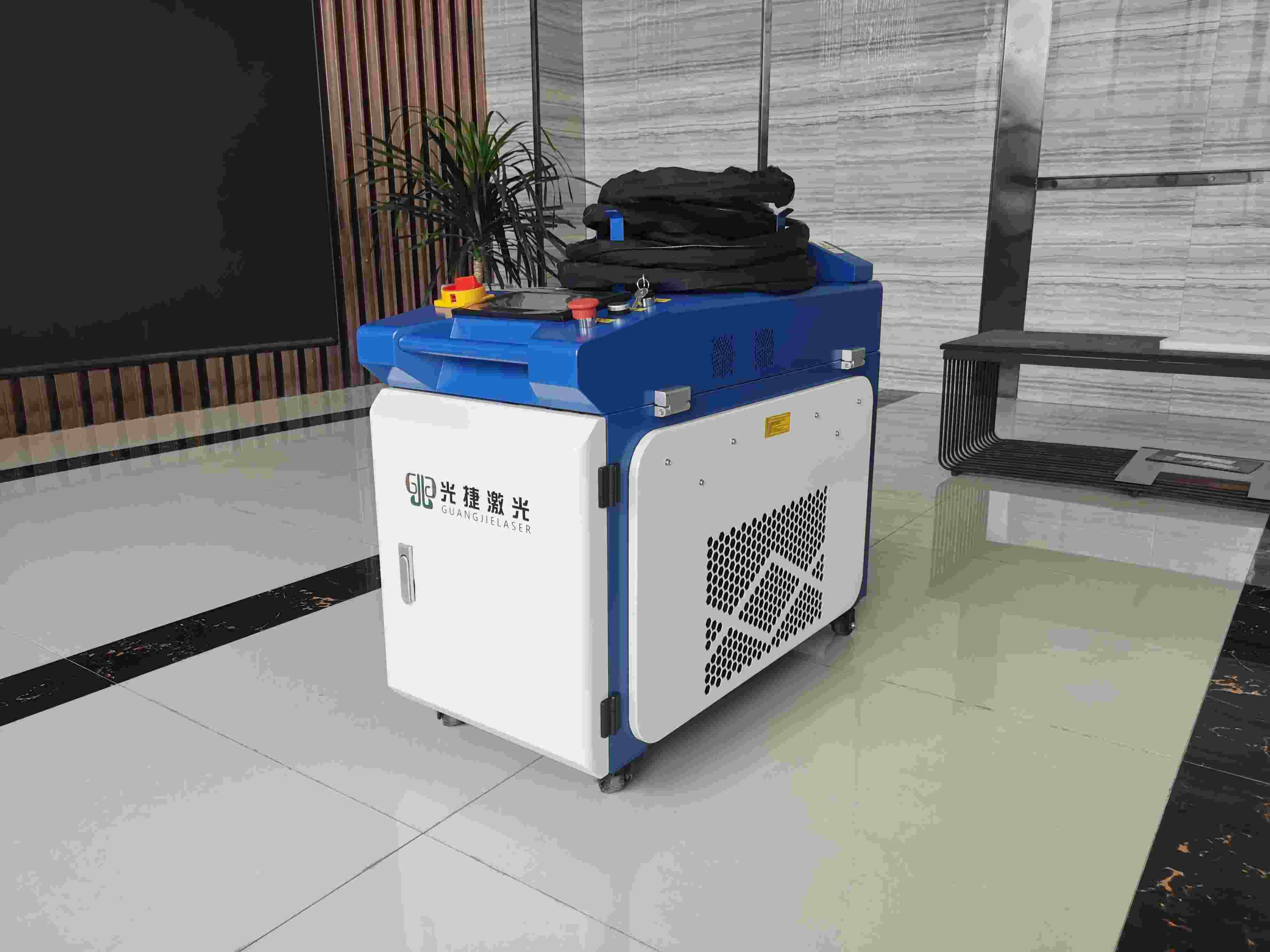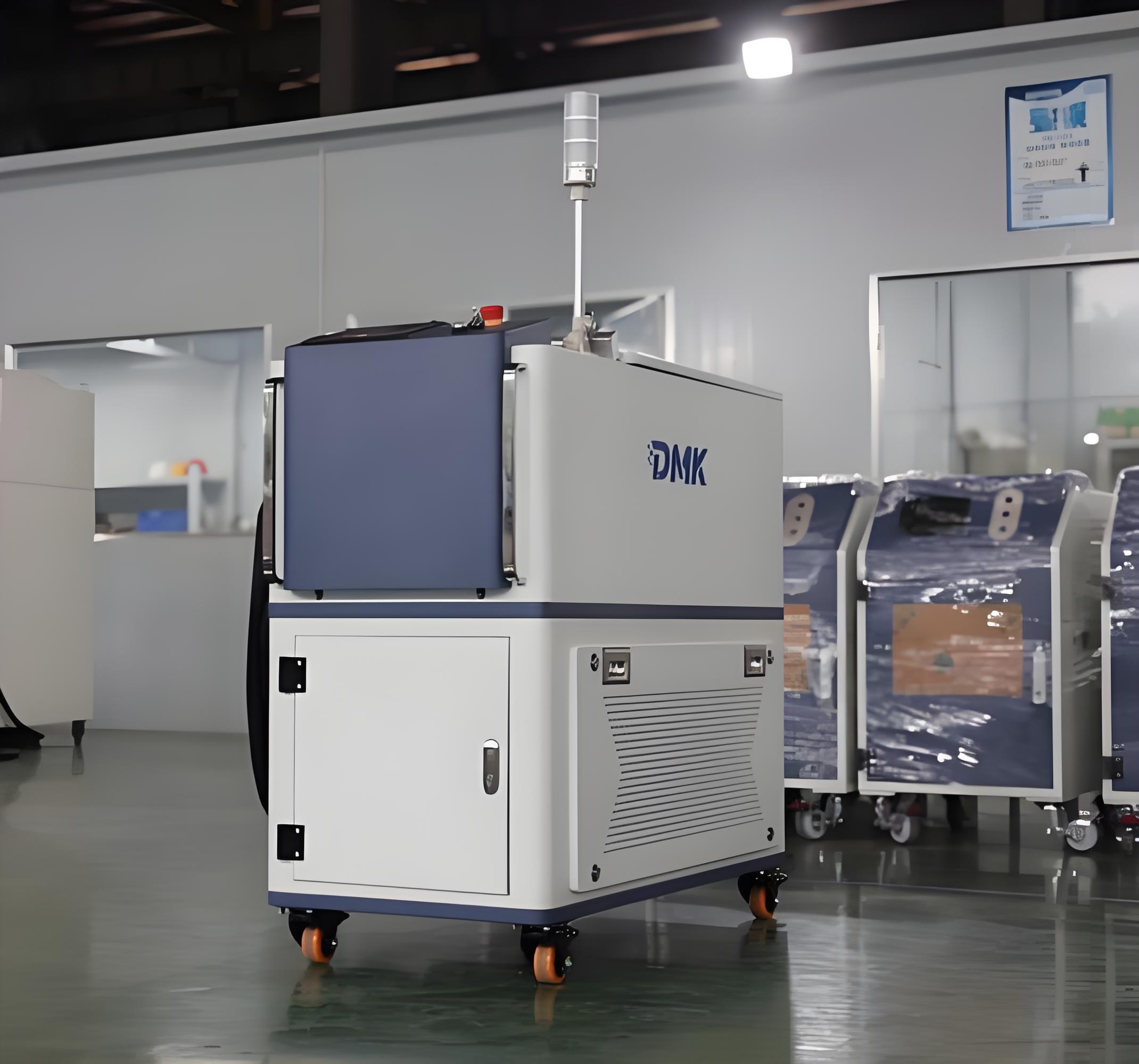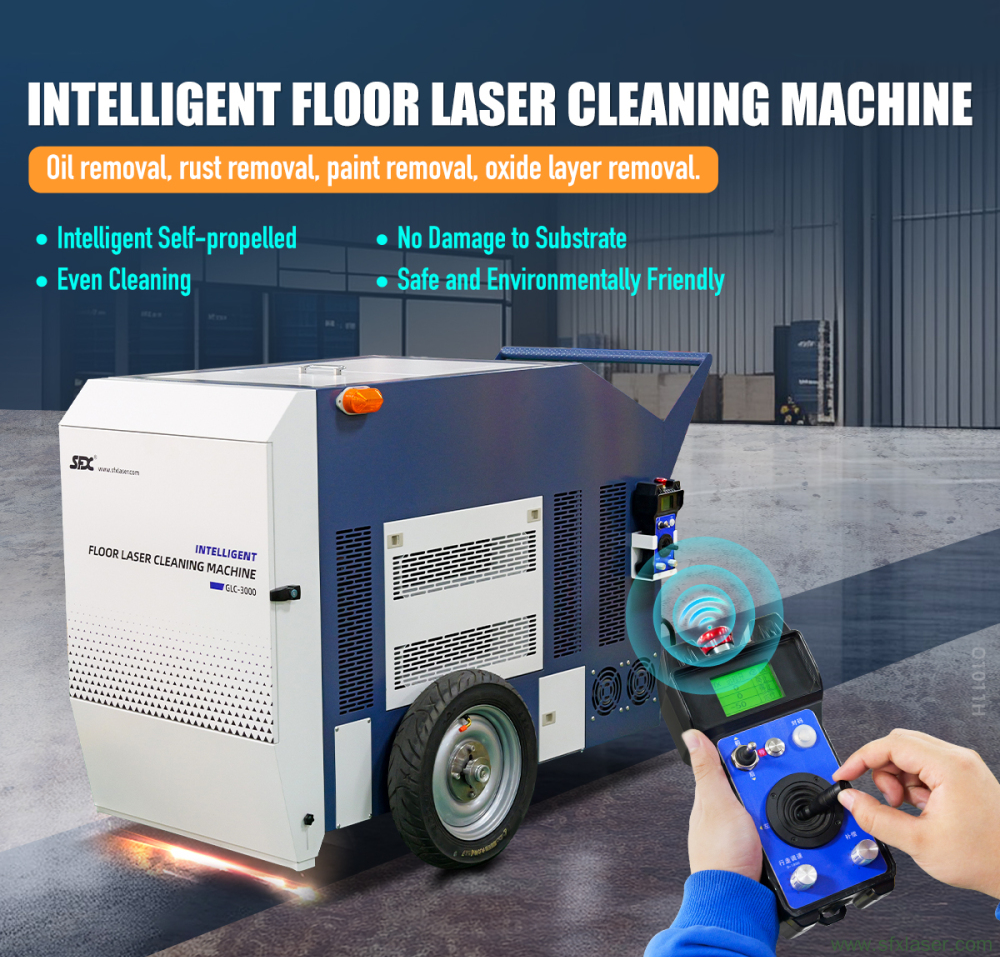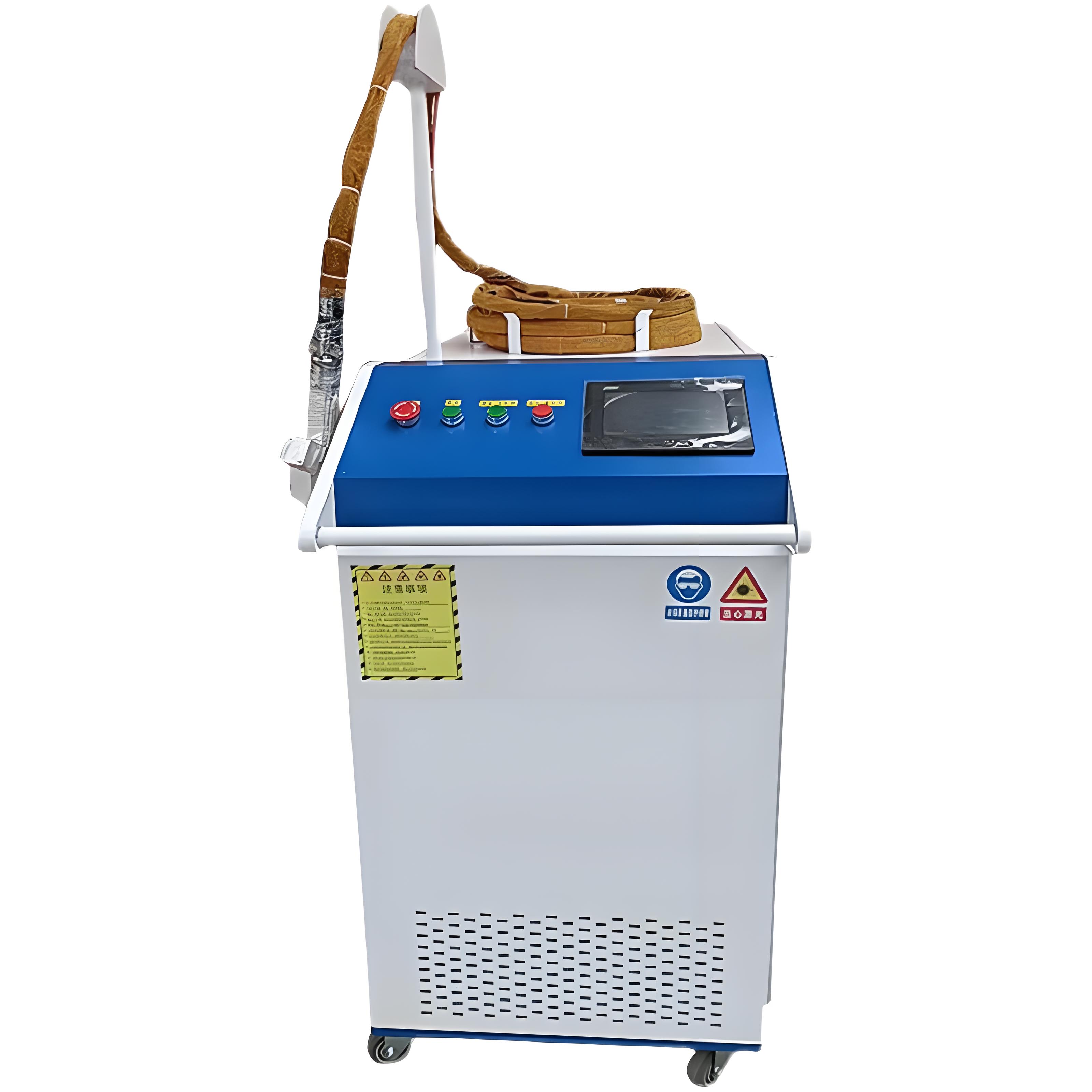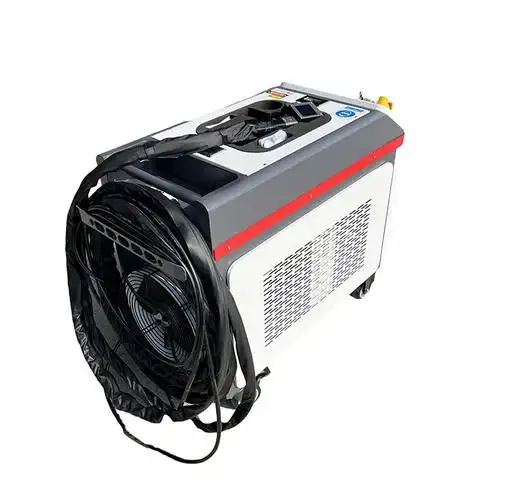Having worked in metal surface treatment for over a decade, I’ve seen rust cause headaches across countless projects, from rusted factory equipment to weathered historical artifacts. When I first came across laser rust removal, it felt like a revelation—a clean, precise, and eco-friendly way to tackle rust without the mess of traditional methods. But not every industry needs or benefits from this high-tech solution. So, which industries are best suited for laser rust removal? Drawing from my hands-on experience, I’ll walk you through the sectors where this technology shines, why it’s a game-changer, and how it addresses their unique challenges. Whether you’re in manufacturing or restoration, this guide will help you decide if laser rust removal is right for your field.

Why Industries Care About Rust Removal
Rust isn’t just a cosmetic issue—it corrodes metal, weakens structures, and can lead to costly repairs or replacements. Industries dealing with metal components, whether in production, maintenance, or preservation, need effective rust removal to ensure performance, safety, and longevity. Traditional methods like sandblasting, chemical cleaning, or grinding have long been the go-to solutions, but they often come with drawbacks: abrasive damage, toxic waste, or time-consuming processes. Laser rust removal, with its non-contact, eco-friendly approach, has opened new possibilities. But its high upfront cost and specialized applications mean it’s not a one-size-fits-all solution. Let’s explore the industries where it delivers the most value.
How Laser Rust Removal Works
Before diving into specific industries, let’s clarify what makes laser rust removal unique. The technology uses a high-energy laser beam to target rust, oxide layers, or contaminants on metal surfaces. The laser’s energy vaporizes or dislodges the rust instantly, leaving the underlying material largely untouched. This precision, combined with minimal environmental impact, makes it appealing for industries with strict standards. I first saw its potential when cleaning rust from a delicate steel component in a factory—it took minutes, left no mess, and preserved the surface perfectly. Now, let’s see which industries can leverage this technology most effectively.
Industries Best Suited for Laser Rust Removal
Based on my experience, laser rust removal is particularly valuable in industries where precision, efficiency, environmental compliance, or material preservation are critical. Below, I’ll detail the top sectors, their specific rust-related challenges, and how lasers address them, with real-world examples to bring it to life.

1. Manufacturing and Industrial Maintenance
Why It’s Suited: Manufacturing facilities, such as those producing machinery, automotive parts, or steel structures, deal with rust on a massive scale. Rust can form during production, storage, or operation, especially in humid or corrosive environments. Laser rust removal excels here due to its speed, precision, and ability to clean without halting production lines. It’s ideal for maintaining equipment like pipelines, storage tanks, or conveyor systems.
How It Helps: Lasers can clean rust from large surfaces or intricate parts without damaging coatings or base materials. In one project, I helped a factory clean rust from a production line’s steel rollers. Using a 1000W laser, we restored the rollers in hours without disassembly, saving days of downtime compared to sandblasting. The process also produced no waste, aligning with the factory’s environmental goals.
Key Applications:
Cleaning rust from production equipment (e.g., presses, molds)
Maintaining pipelines and storage tanks
Preparing surfaces for welding or coating
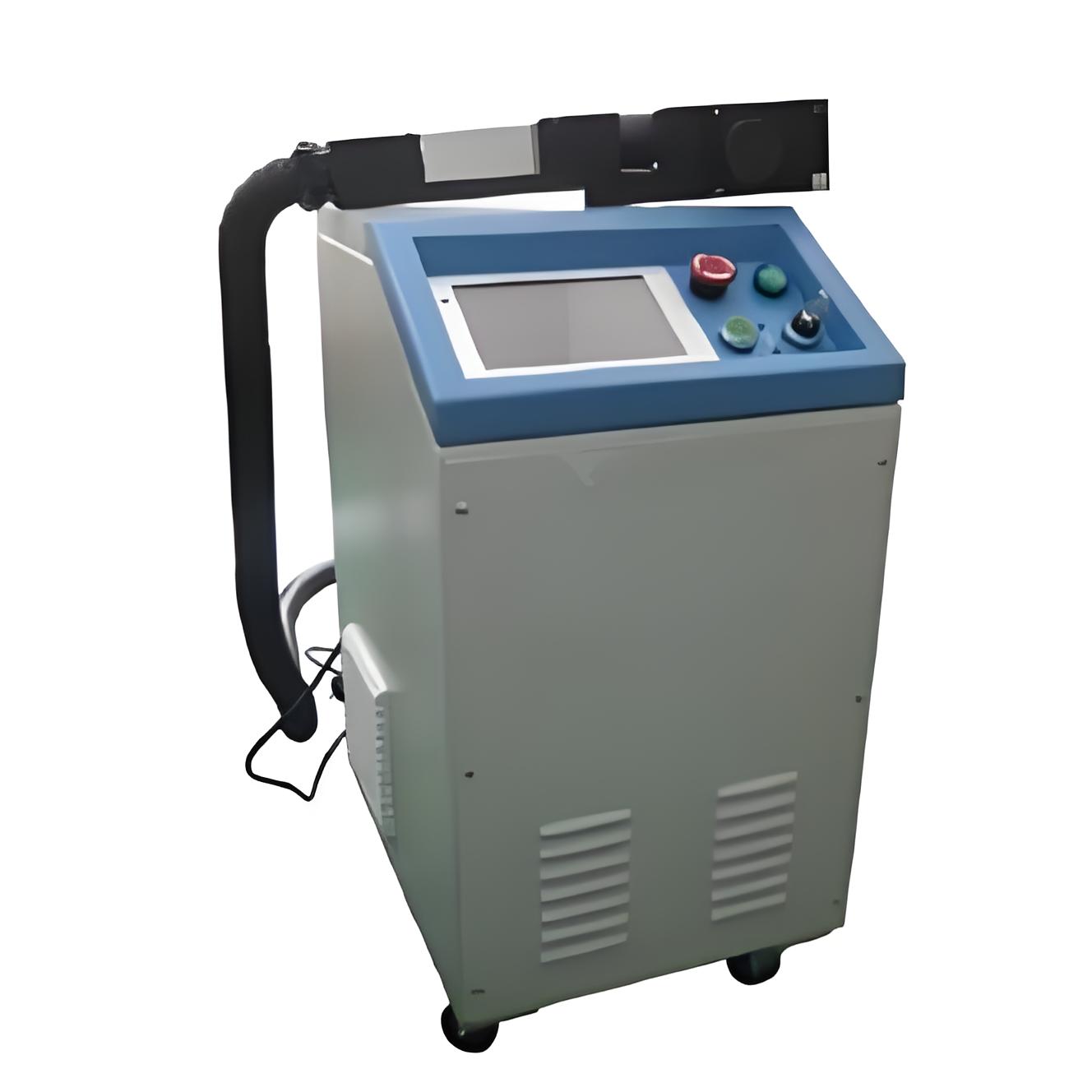
2. Aerospace and Aviation
Why It’s Suited: The aerospace industry demands precision and zero tolerance for surface damage, as even minor scratches can compromise safety-critical components like turbine blades or aluminum airframes. Rust often forms on parts during storage or maintenance, especially in coastal hangars. Laser rust removal is perfect here because it’s non-abrasive and can clean complex geometries without affecting tolerances.
How It Helps: Lasers remove rust and oxides from sensitive materials like aluminum, titanium, or composites without altering their properties. I once worked on a project to clean rust from aluminum aircraft panels. A 300W pulsed laser removed the rust in minutes, preserving the panels’ precise dimensions and avoiding the pitting that sandblasting might cause.
Key Applications:
Cleaning rust from aircraft fuselages and engine components
Restoring precision parts during maintenance
Preparing surfaces for non-destructive testing
3. Marine and Shipbuilding
Why It’s Suited: Ships and offshore structures face relentless rust due to constant exposure to saltwater and humidity. Rust compromises hull integrity, increases fuel consumption, and raises maintenance costs. Laser rust removal is a game-changer in this industry for its ability to clean large surfaces quickly and its eco-friendly nature, which is critical in marine environments with strict environmental regulations.
How It Helps: Lasers can remove rust, scale, and marine fouling from steel or aluminum hulls without generating hazardous waste. In a shipyard project, I saw a 1500W laser machine clean rust from a ship’s deck in a single day, compared to three days for sandblasting. The process left no abrasive residue, reducing cleanup time and environmental impact.
Key Applications:
Cleaning rust from ship hulls and decks
Maintaining offshore platforms and pipelines
Restoring rusted marine equipment
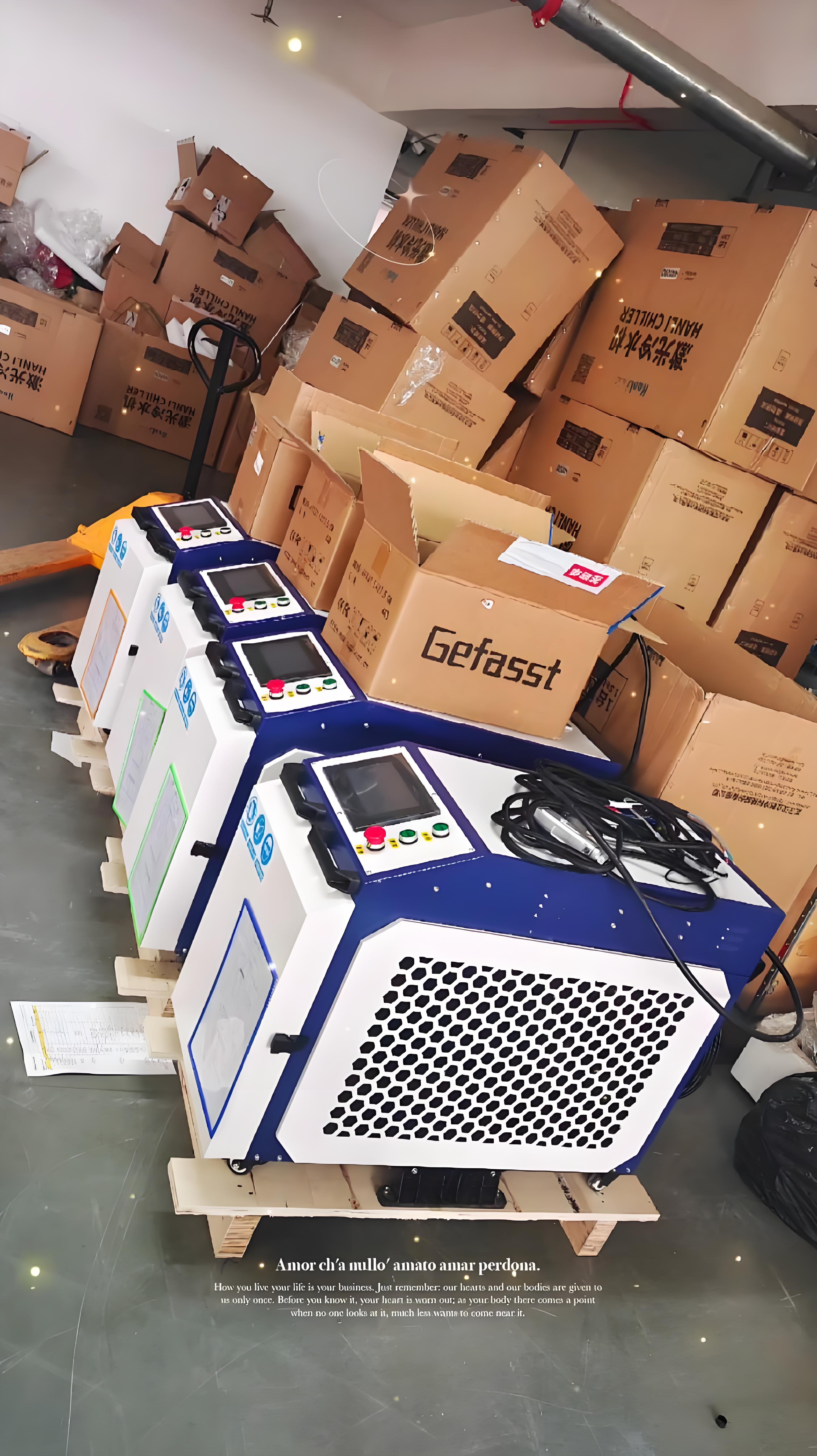
4. Automotive and Vehicle Restoration
Why It’s Suited: The automotive industry, including both manufacturing and restoration, deals with rust on everything from car bodies to vintage vehicle frames. For restoration, preserving original metal is crucial to maintain value, while manufacturers need efficient surface preparation. Laser rust removal offers precision and versatility, making it ideal for both.
How It Helps: Lasers can remove rust and old paint without damaging thin or intricate metal parts. I worked on a vintage car restoration where a 500W laser cleaned rust from a 1960s Mustang’s chassis. The process preserved the original metal, unlike grinding, which could’ve thinned the already delicate frame.
Key Applications:
Restoring classic cars and motorcycles
Cleaning rust from automotive components during production
Preparing surfaces for repainting or coating
5. Heritage Conservation and Artifact Restoration
Why It’s Suited: Museums, historical societies, and restoration experts often handle rusted artifacts, such as sculptures, weapons, or architectural elements, where preserving every detail is paramount. Laser rust removal is ideal because it can clean delicate surfaces without abrasion or chemical damage, ensuring historical integrity.
How It Helps: Lasers remove rust and oxides with pinpoint accuracy, preserving engravings or patinas. In a museum project, I used a 200W laser to clean rust from a 19th-century iron cannon. The laser removed the rust without touching the intricate designs, something chemical cleaning couldn’t guarantee.
Key Applications:
Restoring historical metal artifacts (e.g., statues, tools)
Cleaning architectural elements like wrought iron gates
Preserving military relics or antique machinery
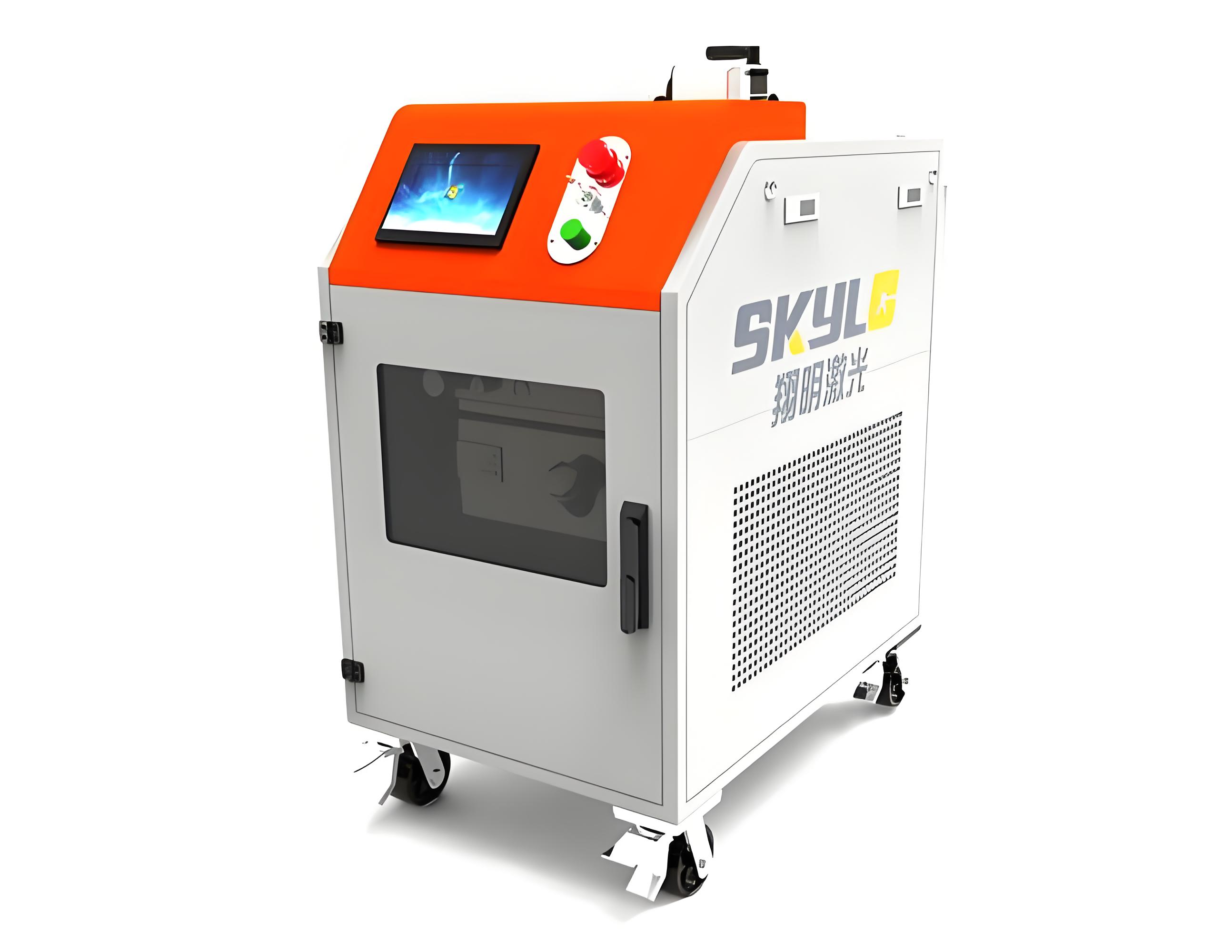
6. Energy and Infrastructure
Why It’s Suited: The energy sector (e.g., oil and gas, wind turbines) and infrastructure (e.g., bridges, rail systems) face rust due to harsh environmental conditions. These industries need durable, efficient rust removal to extend asset life and meet safety standards. Laser rust removal fits well due to its portability and ability to handle large-scale projects without environmental fallout.
How It Helps: Lasers can clean rust from massive structures like pipelines or wind turbine towers without generating waste that could harm sensitive ecosystems. I assisted in a project to clean rust from a railway bridge using a 1000W laser. The process was completed onsite in days, with no chemical runoff, unlike acid cleaning.
Key Applications:
Maintaining oil and gas pipelines
Cleaning wind turbine components
Restoring bridges and rail infrastructure
Table: Laser Rust Removal Applications by Industry
To give you a clearer picture, here’s a table summarizing how laser rust removal benefits key industries, based on my experience:
| Industry | Key Rust Challenges | Laser Benefits | Typical Applications |
|---|---|---|---|
| Manufacturing | Rust on equipment, downtime concerns | Fast, no disassembly, eco-friendly | Pipelines, rollers, molds |
| Aerospace | Precision parts, sensitive materials | Non-abrasive, high precision | Aircraft panels, turbine blades |
| Marine | Saltwater corrosion, environmental rules | Large-scale cleaning, no waste | Ship hulls, offshore platforms |
| Automotive | Rust on thin or valuable parts | Preserves metal, versatile | Car chassis, production components |
| Heritage Conservation | Delicate artifacts, historical value | Gentle, precise, no chemical damage | Sculptures, antique machinery |
| Energy/Infrastructure | Harsh environments, large structures | Portable, eco-friendly, efficient | Pipelines, bridges, wind turbines |
Note: These applications assume proper laser settings and trained operators. Always consult equipment guidelines for specific use cases.
Why Laser Rust Removal Fits These Industries
Across these industries, laser rust removal stands out for several reasons:
Precision: It removes rust without damaging the base metal, critical for aerospace, automotive, and heritage conservation where material integrity is non-negotiable.
Eco-Friendliness: With no chemicals or abrasive waste, lasers align with strict environmental regulations in marine, energy, and manufacturing sectors.
Efficiency: Lasers clean faster than traditional methods, reducing downtime in high-stakes industries like manufacturing and infrastructure.
Versatility: They handle various rust types (surface rust, deep rust, scale) and metals (steel, aluminum, copper), making them adaptable across applications.
In a project for a wind turbine manufacturer, I saw a laser machine clean rust from tower components in half the time of sandblasting, with no environmental cleanup needed. This versatility and efficiency make lasers a top choice for forward-thinking industries.
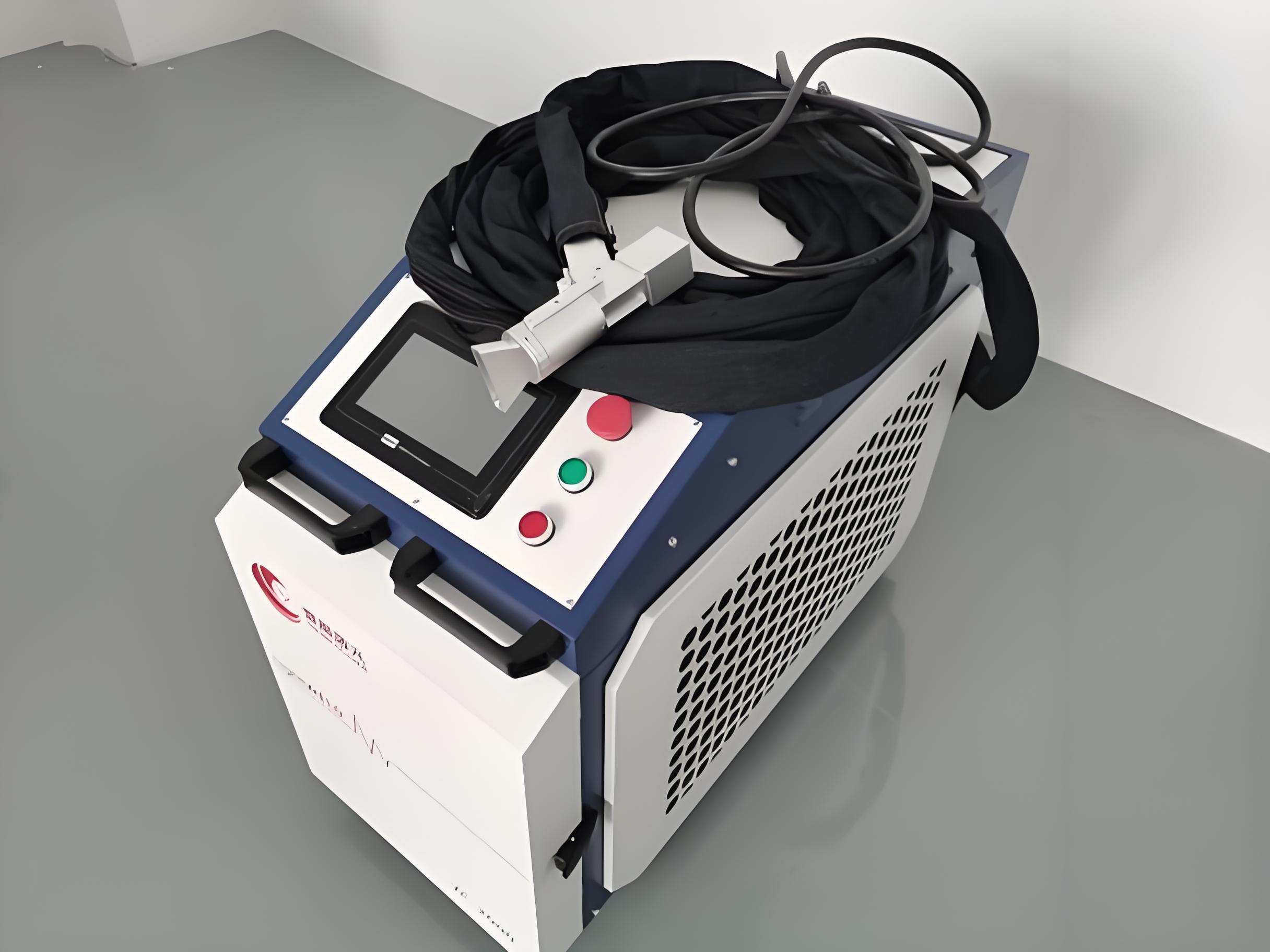
Industries Where Laser Rust Removal May Be Less Practical
While laser rust removal is powerful, it’s not ideal for every industry. Here are a few where traditional methods might still dominate:
Small-Scale Workshops: For small businesses with limited budgets, the high cost of laser equipment (tens of thousands of dollars) can be prohibitive. I’ve seen mom-and-pop shops stick to grinding for one-off jobs due to affordability.
Non-Metallic Materials: Industries working with wood, plastic, or composites (e.g., furniture manufacturing) can’t use lasers, as they risk burning non-metallic surfaces.
Ultra-Thick Rust: In industries like heavy construction, where rust layers exceed 5mm, mechanical methods like grinding may be faster for initial removal, though lasers can finish the job.
I once advised a small contractor against investing in a laser for occasional, heavy rust removal on thick steel beams. Grinding was more cost-effective, but we used a laser for final surface prep to ensure quality.
Real-World Examples: Laser Rust Removal in Action
To show how laser rust removal benefits different industries, here are two projects I’ve worked on:
Marine Industry: Ship Hull Maintenance
A shipyard needed to remove rust and marine fouling from a steel hull. Using a 1500W laser, we cleaned 200 square meters in a day, with no abrasive waste to contaminate the dock. Sandblasting would’ve taken three days and required extensive cleanup, making the laser a clear winner.
Heritage Conservation: Antique Restoration
A museum needed rust removed from a 17th-century steel sword without damaging its engravings. A 200W pulsed laser cleaned the rust in under an hour, preserving every detail. Chemical cleaning was too risky, and grinding would’ve ruined the artifact.
These cases highlight how lasers deliver precision and efficiency tailored to industry needs.

Choosing the Right Laser Rust Removal System
If your industry could benefit from laser rust removal, selecting the right equipment is key. Here’s what I’ve learned from helping clients choose systems:
Power Level: Use 100-500W for delicate tasks (e.g., heritage conservation) and 1000W+ for heavy-duty jobs (e.g., marine, infrastructure).
Portability: Handheld lasers suit small or intricate parts (e.g., automotive), while automated systems are better for large surfaces (e.g., shipbuilding).
Cooling System: Water-cooled machines are essential for continuous use in industries like manufacturing or energy.
Training: Ensure operators are trained to adjust settings for different metals and rust types to maximize effectiveness.
I once helped a factory select a 500W handheld laser for cleaning production equipment. It was versatile, easy to use, and paid for itself in reduced downtime within months.
The Future of Laser Rust Removal Across Industries
The adoption of laser rust removal is growing as technology advances. AI-integrated lasers that automatically detect rust and adjust settings are reducing operator error, which I’ve seen cut cleaning time by 20% in trials. Ultrafast lasers (e.g., femtosecond) are also emerging, offering even greater precision for industries like aerospace and conservation. As environmental regulations tighten, industries like marine and energy will increasingly turn to lasers to meet sustainability goals.
Conclusion: A Tailored Solution for Modern Industries
From my years in the field, I’ve seen laser rust removal transform how industries tackle rust, offering unmatched precision, efficiency, and eco-friendliness. It’s a perfect fit for sectors like manufacturing, aerospace, marine, automotive, heritage conservation, and energy, where rust poses unique challenges. While it’s not ideal for every situation—small budgets or non-metallic materials may call for traditional methods—its benefits make it a powerful tool for industries prioritizing quality and sustainability.
If you’re wondering whether laser rust removal suits your industry or project, I’m happy to dive deeper into specifics. Just reach out, and I’ll share insights from my experience to help you make the right call!
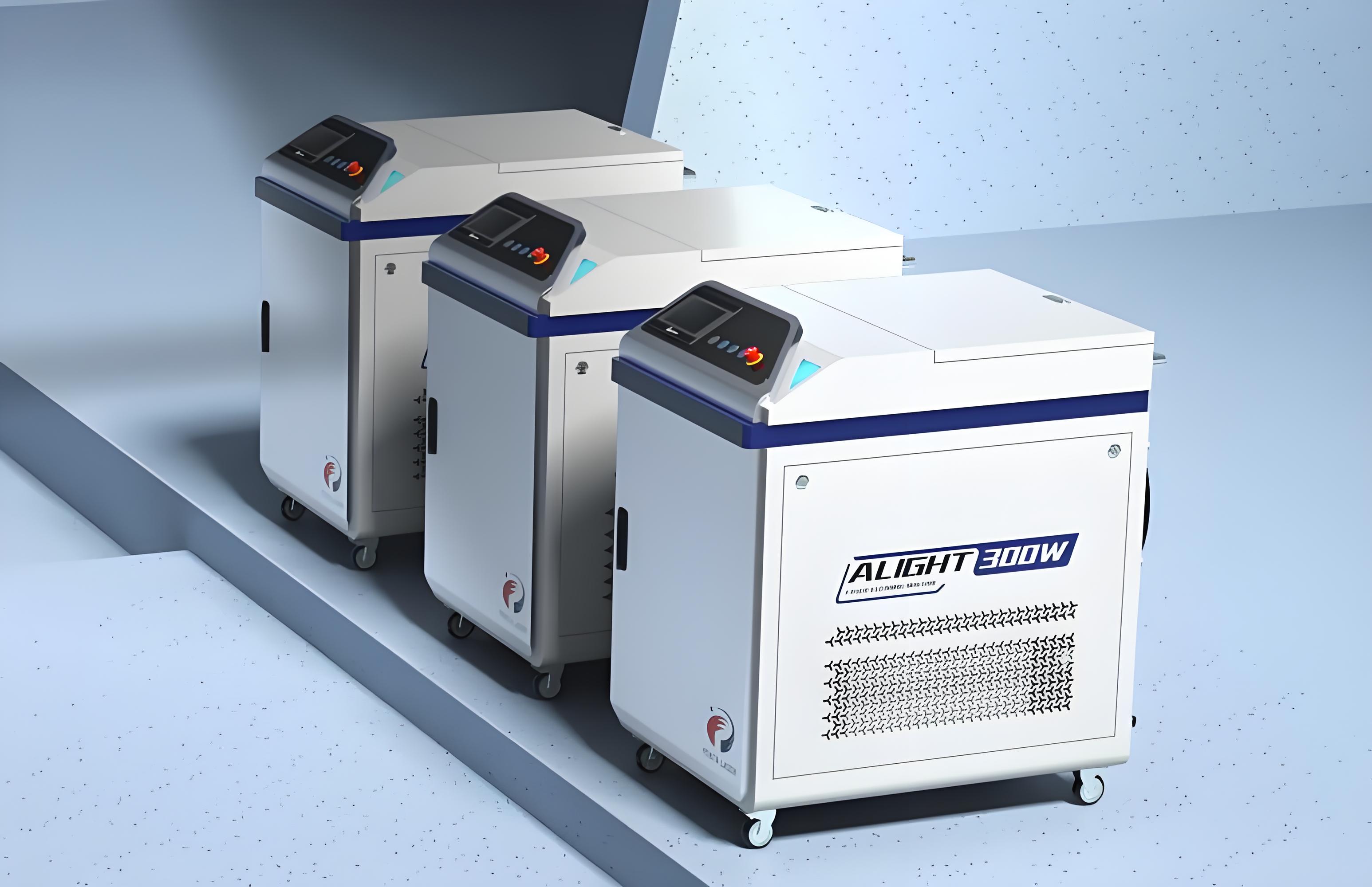
Related Q&A
1. Is laser rust removal cost-effective for small industries?
For small-scale operations, the high upfront cost can be a barrier, but for frequent rust removal or high-value projects, lasers save on labor and waste disposal, making them cost-effective over time.
2. Can laser rust removal be used on non-metallic surfaces?
Lasers are designed for metals and may damage materials like wood or plastic. For non-metallic surfaces, traditional methods like chemical cleaning are often safer.
3. How does laser rust removal benefit the marine industry specifically?
Lasers clean rust and fouling from ship hulls quickly without generating waste, reducing environmental impact and complying with strict marine regulations.
4. Do all industries need high-power laser machines?
No, low-power lasers (100-500W) are sufficient for delicate tasks like artifact restoration, while high-power (1000W+) suits heavy industries like marine or infrastructure.
5. How can I tell if my industry would benefit from laser rust removal?
Assess your rust challenges, budget, and environmental needs. If precision, speed, or eco-friendliness are priorities, lasers are likely a good fit—consult an expert for tailored advice.

